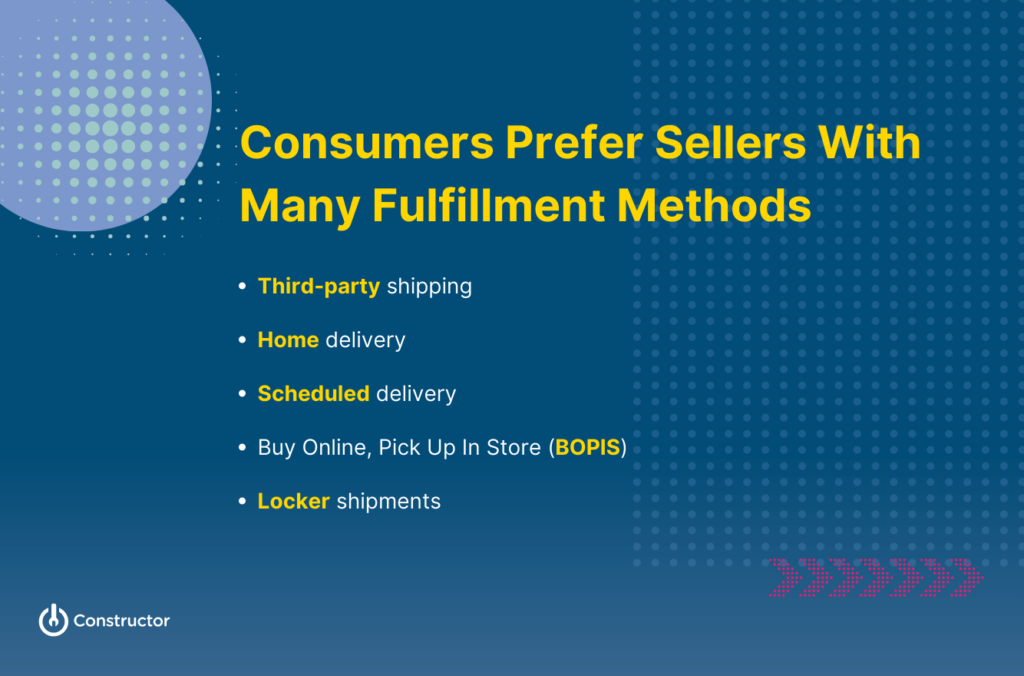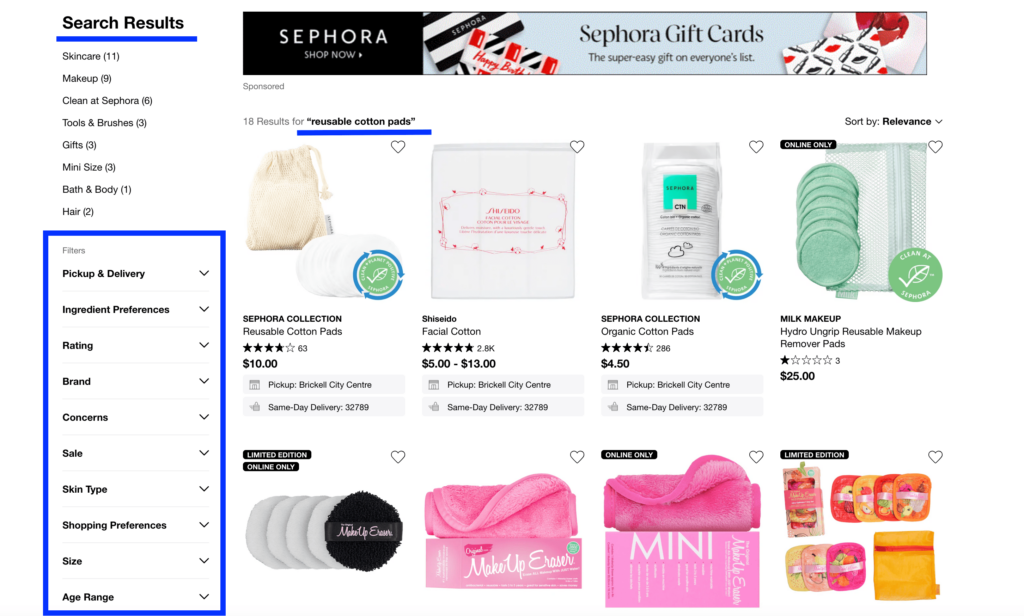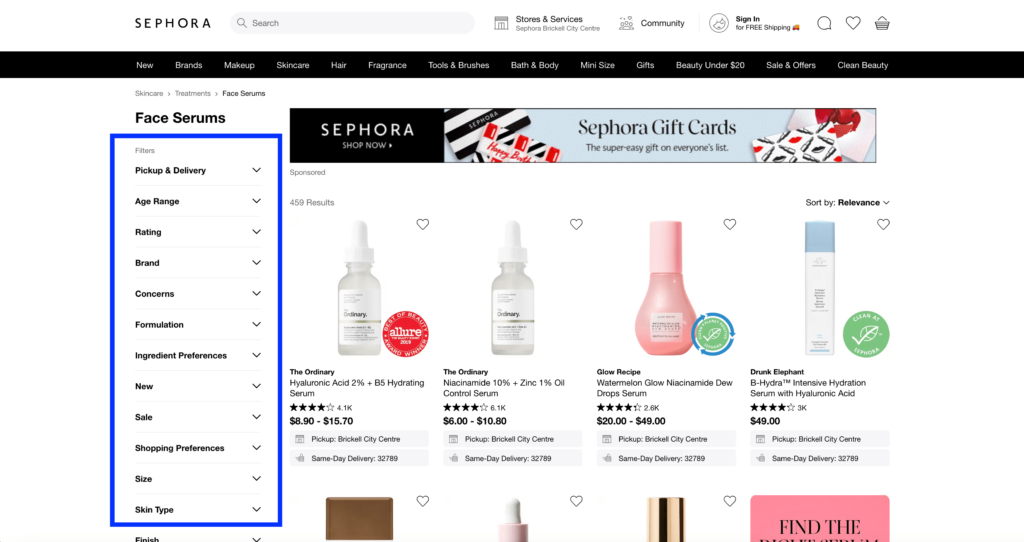The purpose of ecommerce conversion optimization is to make small adjustments across your site to improve ROI.
Simple in theory, difficult in practice.
While proactive companies approach ecommerce conversion optimization with a strategic plan and patience, the most successful ones couple their initiatives with tech to lighten their team’s workload, enhance the consumer shopping experience, and ultimately increase profit and revenue.
Here we walk you through how to get started and share seven tried-and-true conversion strategies.
Table of Contents
What Is Ecommerce Conversion Optimization?
Where to Begin with Ecommerce CRO
What Is Ecommerce Conversion Optimization?
Ecommerce conversion optimization, or ecommerce conversion rate optimization (CRO), is the process of implementing small changes to your site to improve conversion rates. It requires strong UX design and knowledge of buyer psychology to positively influence how consumers think, feel, and behave across your site.
The areas of an ecommerce site that benefit from CRO include the homepage, product description pages (PDPs), recommendation pods, checkout page, category pages, collection landing pages, Search, and others.
What’s a good ecommerce conversion rate?
It’s difficult to define a good ecommerce conversion rate. It’s industry dependent, and the exact number depends widely upon consumer behaviors — i.e., if they’re using your internal site search engine or just browsing.
For example, grocers often have a higher conversion rate due to the targeted nature of search queries on their sites, coupled with the fact that the average cart size is many more items than it would be on a clothing retailer’s site.
Where to Begin with Ecommerce Conversion Optimization
The overall goal with ecommerce conversion optimization is to to take a holistic approach to improving the shopping experience so customer purchasing confidence increases along with your bottom line.
Working with the end in mind, here’s a process to go from your current CRO to an ideal one:
- Research. Start by calculating your current CRO, which is the total number of conversions / number of visitors x 100. This will be your benchmark.
- Decide. Choose metrics to optimize that are tied to company goals, actionable, and time-sensitive. Some ecommerce metrics that matter include average order value (AOV), revenue per visitor (RPV), abandonment rate, and sell-through rate. You can also measure consumer behavior analytics, such as add-to-carts, search history, and click-through-rate (CTR).
- Optimize. When A/B testing, also implement the B version. Take time to identify what you’ll change to drive more conversions.
- Test. Once you’ve decided upon which metric to measure, use appropriate CRO techniques. For example, to reduce abandoned cart rates, tailor browse and search experiences to provide more attractive products based on first-party clickstream data. To optimize for sell-through rate, boost certain products in search and browse results.
- Analyze. This is where AI-powered search intelligence can come in handy, as it allows you to extract insights from millions of queries, automatically identifying opportunities for merchant intervention and reducing merchandising gruntwork.
7 Ecommerce Conversion Optimization Strategies
If you have your current CRO and have already fixed your website vitals (think: loading time) and set up proper analytics (think: heat maps), it’s time to get more creative with your ecommerce optimization strategies.
Doing so will not only increase conversions, profit, and revenue, but also create a more holistic shopping experience.
1. Make content more engaging across the site
There are always opportunities to make your content more comprehensive to reduce friction in the shopping experience and instill confidence.
Here are a few quick wins:
- Enhance PDPs. Add product videos; high quality, 360-degree views of products; and prominently placed product reviews across your product pages..
- Edit your contact page. Having a comprehensive contact page reduces uncertainty regarding customer support. Make sure you include all the possible ways customers can contact you (email, address, live chat, form fill, etc.).
- Offer live chat. Implement live chat to speed up the content search and customer support experience.
Enterprise ecommerce companies can also leverage product finders. They distill complex domain knowledge into select questions, offering tailored recommendations for specific situations. Again, this increases customer satisfaction and consequently, revenue.
2. Offer more fulfillment methods
With retailers cracking down on return policies amidst the rising costs, consumers are also taking interest in getting their goods in more than one way.
Almost half of consumers admit they prefer sellers who offer a range of fulfillment methods so they can choose the option that fits their needs.
Aside from home and scheduled delivery, this includes:
- Third-party shipping
- Buy online, pick up in store (BOPIS)
- Locker shipments

BOPIS specifically grew in popularity thanks to health concerns, with over a third of consumers in a mid-pandemic study citing COVID-19 as the main reason why they chose BOPIS offerings.
Since then, demand for BOPIS has remained relatively strong, not due to health concerns but other pandemic-related consequences: supply chain disruptions. Shoppers are concerned about longer delivery times and expected time of arrival.
What does this mean for your ecommerce business?
Beyond fulfillment methods, consumers are expecting more omnichannel shopping experiences that prioritize their needs.
3. Optimize your ecommerce search bar
Almost half of ecommerce sites fail to support key search queries performed by shoppers, with a whopping 71% requiring users to search by the exact jargon the site uses to return results (think: failing to return rainboots if an English shopper types in “wellies”).
These failed queries are leading to “no results” pages, frustrated consumers, and abandoned carts.
Luckily, you can adjust the functionality of your search bar to improve your ecommerce conversion optimization rate:
- Prioritize attractiveness over keyword relevance.
- Offer Autosuggest to get your users where they want to go quicker.
- Leverage first-party clickstream data and user-given zero-party data to provide a more personalized search experience.
- Reduce zero and frustrated results with Cognitive Embeddings Search (CES), which has been proven to increase RPV by 5%.
The State of Ecommerce Search and Discovery 2023
400+ online shoppers reveal what really matters
And in terms of interface optimizations, ecommerce companies can also experiment with:
- Color and position
- Fonts
- Sticky search functionality
- Sizing
These visual tweaks are possible when you partner with a high-performing product discovery platform that takes care of the grunt work while allowing you to focus on other ways to drive revenue and profit.
4. Leverage facets across your site
Faceted search is adding product attributes to results pages that allow shoppers to further filter their search, as can be seen below with the query “reusable cotton pads” on Sephora’s website.

Facets work with other ecommerce pages as well, like landing pages and category pages. When leveraged for category pages, it’s known as faceted navigation.
Pictured below is faceted navigation in action on a category page for “face serums” on Sephora’s website.

The best product discovery platforms allow for dynamic facets across your ecommerce site. This means they change automatically according to clickstream data and hard rules set by your merchants.
This is why a shopper who goes to Sephora’s “hair dryers” category page will see different facets from those on the “face serums” category page.

When paired with strategic merchant intervention, advanced facet management — and other site merchandising tactics — can lead to lifts in search revenue.
To continue seeing how to provide the most frictionless product search experience for your shoppers while hitting key business metrics, check out best practices for ecommerce faceted search.
5. Improve product recommendation pods
Recommendation pods should contain products that are relevant and attractive to the user’s current journey, which is determined via leveraging clickstream data. You can also collect and leverage zero-party data — i.e., via Quizzes — to guide shoppers in choosing the best products.
It’s important to note that recommendation pods should be strategically located on your website, according to data. And to optimize your site experience, you’ll combine the recommendations results engine with UX elements to achieve a business goal.

An example strategy statement might be:
“To increase AOV by 2%, we plan to place complementary recommendations on PDPs, the add-to-cart modal, and the checkout page with a 10% discount.”
Learn more about ensuring you have your foundational building blocks in order for your ecommerce recommendation strategy before going at it alone.
6. Streamline the checkout process
Over two-thirds of carts are abandoned by users, with most common reasons being forced account creation, limited number of payment options, unexpected shipping costs, and poorly labeled checkout fields, among others.
To reduce friction and cart abandonment rates, here are some tips:
- Provide all costs upfront
- Display product images throughout the entire checkout process
- Implement a one-page checkout with a progress bar
- Offer multiple payment and shipping options
Remember to try one tactic at a time when tweaking your checkout page so you can accurately attribute the results.
7. Layer business KPIs on search results
One of the best ways to dramatically improve your ecommerce conversion rate is to rank products for KPIs across your site — from Search and Autosuggest to category pages and collection landing pages.
This is possible via a product discovery solution that leverages clickstream data. This first-party data not only ranks products according to user affinity, but also the business metric you’re trying to optimize for — inventory velocity, conversions, RPV, average order value (AOV), etc.
And when paired with transformers and natural language processing (NLP), your internal site search engine will better understand the semantic meaning of long-tail queries, leading to more revenue and conversions.
Ecommerce CRO Made Easier With AI
Optimizing your ecommerce CRO is no easy feat, but it’s made easier with a game plan and a product discovery solution powered by AI and machine learning (ML).
The right tools will not only lighten the burden on your merchandising team, allowing them to focus on more strategic work, but also help you hit your KPIs consistently — despite the macroeconomic landscape.
The State of Ecommerce Product Search and Discovery 2023
Shoppers in Search of a Change

